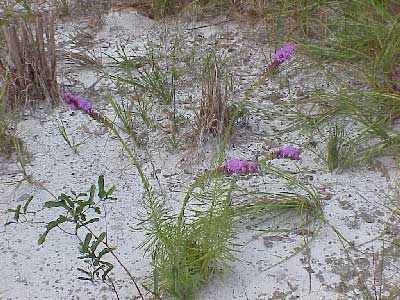
Will Sandhill Still Have a Home In Hernando County?
by Cindy
Liberton
Getting to know sandhill.
What
we call the sandhill ecosystem was once
The
sandhill’s high pine community grades into longleaf pine flatwoods, and many
plant species are
Where
has all the sandhill gone? Once
representing the largest forest type in the southeastern coastal plain, 90% of
Florida’s sandhill systems have disappeared over the last century. In 1936,
about 7.6 million acres of forests dominated by longleaf pine were present in
Florida. By 1987 there were only 950,000 acres (Taylor, 1998).
It is estimated that sandhill originally covered 20 percent of Florida,
covering much of the Panhandle and the northern two-thirds of the peninsula.
Hernando is one of the few counties in peninsular Florida to be home to sandhill
communities, and much of this is found on the Brooksville Ridge.
Well-drained
soil and the open character have made it prime land for development, as well as
agri-timber and citrus groves. Sandhill in our county that has dodged
development or agricultural use typically has been transformed to xeric hammock
by fire suppression. And there is
worse news; in Hernando, the mature pines remaining are now threatened by the
Southern Pine Beetle, which has infested over 2300 acres in the county. While
the beetle prefers loblolly pine, when swarming the beetle is less
discriminating, and will infest weakened longleafs as well.
Where
you can see it. True
sandhill is now hard to find. In order to preserve or restore sandhill, it must
occupy large enough areas to be managed with fire, and it must have at least a
minimal level of species diversity, which may eliminate many pasturelands from
restoration.
In
Hernando County, one of the best places to see sandhill is at the Nature
Conservancy’s Janet Butterfield Brooks Preserve. The fall flowers are
spectacular, as those who have participated on our annual joint field trip with
Hernando Audubon will attest. Weeki Wachee Preserve, Chassahowitzka Wildlife
Management Area, Annutteliga Hammock and some areas of the state forest also
contain expanses of sandhill which are being preserved or restored.
To see sandhill restoration in action, visit Chinsegut Nature Center. Decades of fire suppression on this 480-acre property had allowed the pines of the sandhill to be engulfed by a dense growth of evergreen oaks. Over time, sandhill plants once common to the property were shaded and pushed out. To those who know the Chinsegut property, it is immediately evident that that removal of the oaks has been largely accomplished, revealing rolling hills of pine once hidden from view. After infested pines are removed, the next stage is perhaps the most rewarding. Native plant aficionados will watch nature, with the help of man, reintroduce wiregrass and other sandhill plant species, until the property is once more home to the color and diversity of the “real Florida.”
Myers,
R. (1990). Ecosystems of Florida. Orlando, FL: University of Central Florida
Press
Morris,
V. (2000) Personal conversation/correspondence. Florida Division of Forestry.
Taylor,
W. (1998). Florida Wildflowers in Their Natural Communities. Gainesville, FL:
University Press of Florida
The
Nature Conservancy, Florida Chapter
Preserve Profiles. www.tncflorida.org
Return to the Main Page
All material on this site © Hernando Chapter of the FNPS. The materials on this website may be copied and distributed without permission, provided that it is used for non-commercial, informational or educational purposes, and you acknowledge this site and the Hernando Chapter of the Florida Native Plant Society as the source of publication.